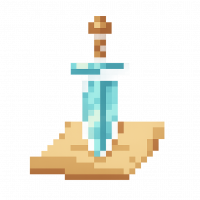Royal Scribe
Royal Scribe
About
- Username
- Royal Scribe
- Joined
- Visits
- 8,798
- Last Active
- Roles
- Member
- Points
- 3,193
- Birthday
- February 5, 1968
- Location
- San Francisco, California
- Real Name
- Kevin
- Rank
- Mapmaker
- Badges
- 16
Reactions
-
[WIP] Rise of the Crone-Mother
Yeah, I should have clarified in my response in your thread that my mountain ridges used Darklands City for the structures but this one is Forest Trails and Creepy Crypts, as Sue said.
Forest Trails has a "cliffs shadow" drawing tool that draws a black polygon onto a sheet with sheet effects designed to turn it into a shadow. The reason is because if you just used the normal Wall Shadow sheet effects, you'd end up with shadows on both sides of the cliff, including the part that's supposed to be the clifftop terrain. This way you can draw the shadow where you need it and skip it where you don't. For the caves, I just left a gap where I placed the cliff symbols and then drew the cliff shadows there, too.
-
Expanding Endless Sea of Ice FR
Having said all the right now I am looking at creating a.. map of an old monastery on the top of a mountain plateau.... As normal other than drawing on paper and making notes I am struggling where to start. I have made one attempt using an overland style and scrapped it. Any thoughts on how I should start Scar Top or Hawk's Erie or both.. have not decided on the name.
I kinda think this would work well with Forest Trails and Darklands City together, unless you're going for a more illustrated look like Mike Schley's. Check out this thread where I put Forest Trail cliffs back-to-back to form mountain ridges and placed some Darklands City structures to provide a sense of scale. Further down the same thread, I did the same with the snow-covered cliffs from Winter Trail and snow-covered buildings from Winter Village. And you can check out another example in this thread where I did the same thing with the cliffs for the lair of a coven of forest hags.
-
Selling maps?
This question if very timely for me because I have just started to dip my toe into trying to sell maps…so I, too, have more questions than answers.
I am trying to sell mine on DriveThruRPG. My storefront is called Royal Scribe Imagiinarium. I have five maps up right now and two more pending review. Your first month or so selling on DTRPG, you’re considered “unverified.” During that period, everything you submit for sale has to be reviewed by staff before it goes live, and some of the other tools are limited (including not being able to put up a logo, etc, yet). Once I’m verified, I will have more tools to work with to promote my stuff.
I can’t tell yet whether it’s a waste of time. I have had about 101 map downloads. Some are priced and a few, for promo purposes, are set at “Pay What You Will.” But of these:
1 paid full price - but I know from the positive review they left that it was a friend of mine
1 paid $5 for a pay what you will map - same friend
3 were free downloads from a comp link I sent to my rpg group
And 95 were the pay what you will maps where they chose to pay $0. Hopefully they will someday convert to being paid customers.
Maybe once I’m verified I will be able to promote it better
Happy to chat more here or in DMs.
-
Volcanoes
-
Printing maps from PDF?
I think I found a good approach.
- Save a high resolution PNG file following the VTT specs Remy laid out in this blog post from 2020.
- Upload the image to an image splicer app that can automate splicing in a grid that you specify with customizable horizontal and vertical dimensions. I used Imagy.app.
- Take the spliced images and drop them in a desktop publishing or word processing program. I tried it in MS Word with margins set at 0.25", but with the images centered. Printed perfectly (nothing cut off and every square is 1 inch by 1 inch.)
So helpful with larger maps, like a town where you never know where the battle may go.





